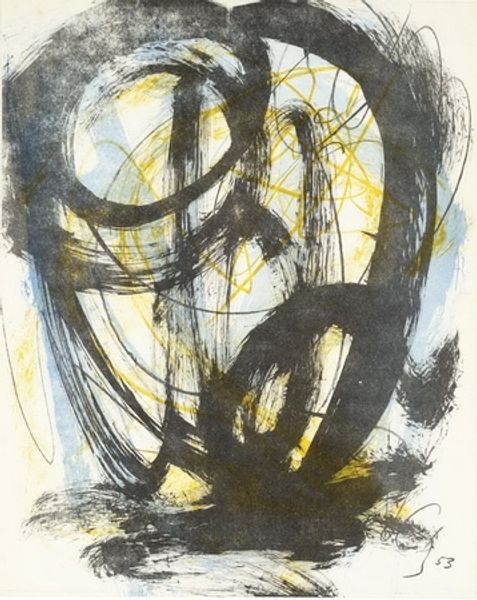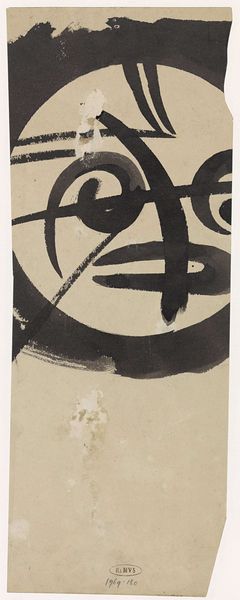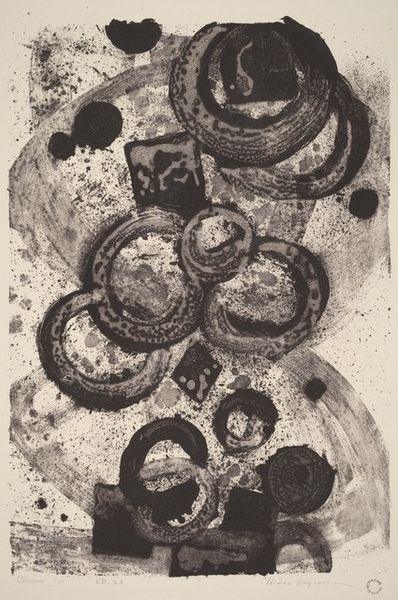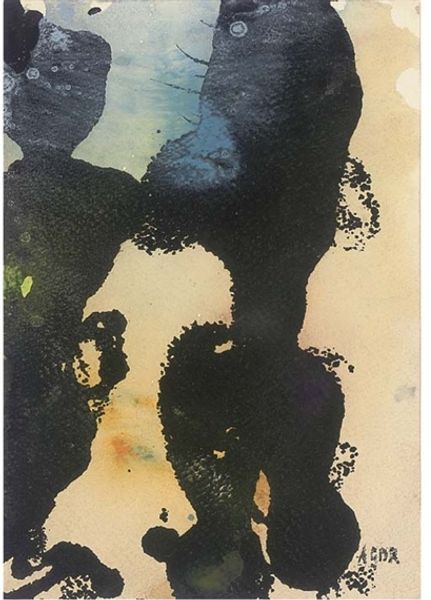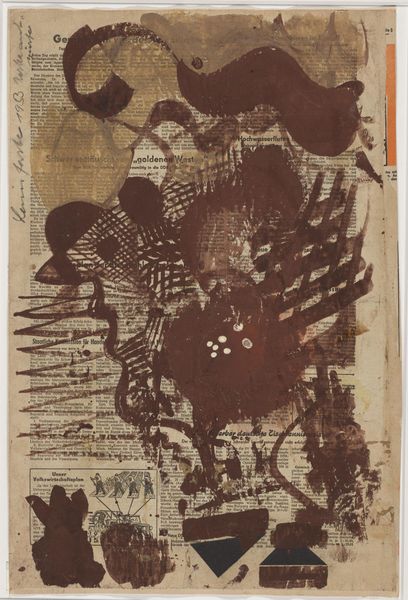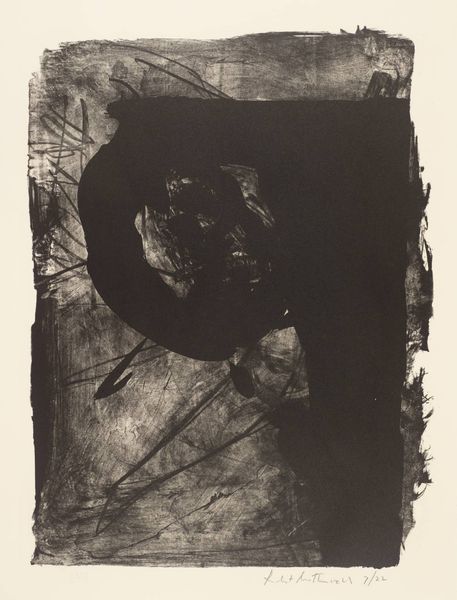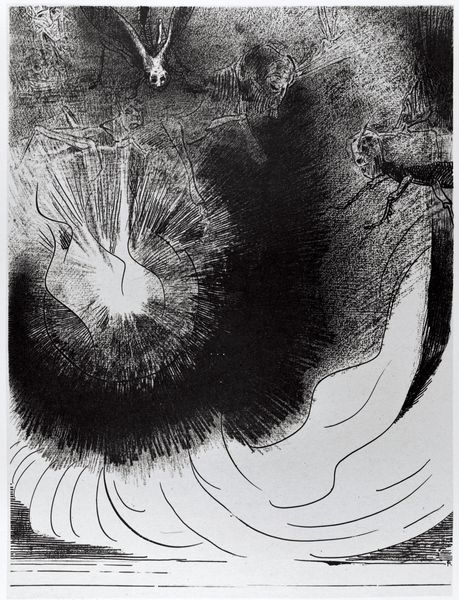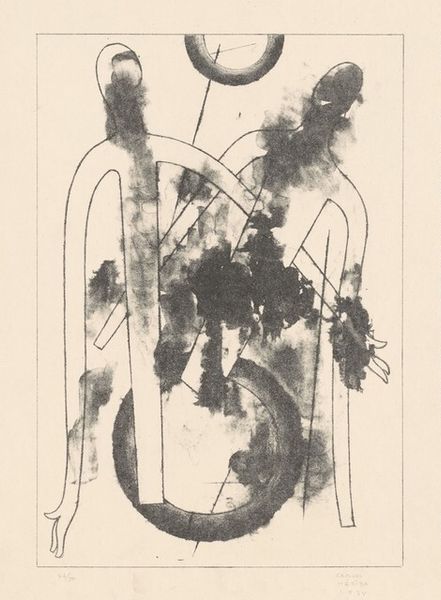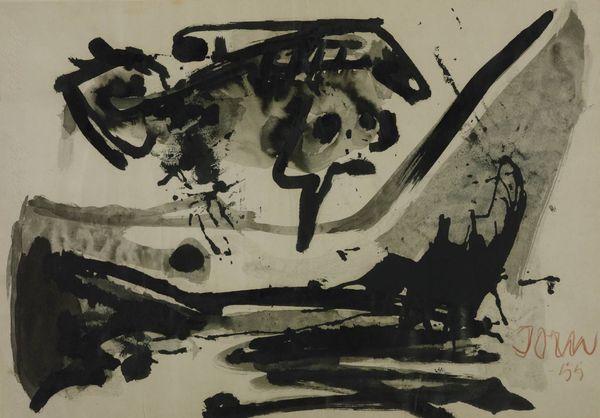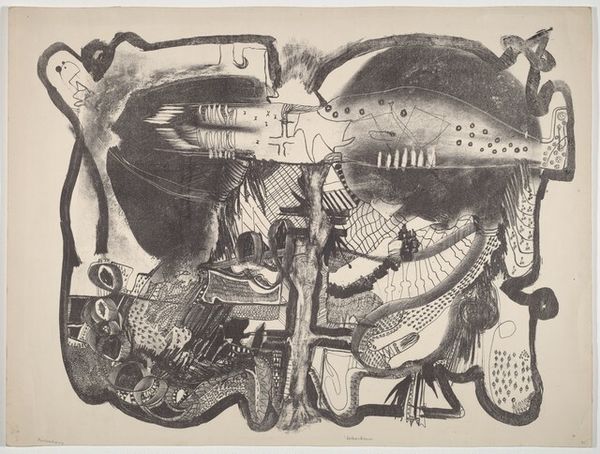
graphic-art, print, paper, woodcut
#
graphic-art
#
organic
# print
#
asian-art
#
paper
#
woodcut
#
line
Copyright: National Gallery of Art: CC0 1.0
Hodaka Yoshida created this abstract print, Kizashi, employing techniques that reflect a fascinating period in Japanese art history. The work combines traditional printmaking with modern abstraction; this blending reveals the artist's negotiation of cultural identity in postwar Japan. The gestural brushstrokes and the interplay between black ink and the bare paper ground reference the traditional art of calligraphy. Yet, Yoshida departs from traditional representation, embracing abstraction to express the dynamism of a society undergoing rapid transformation. Japan, recovering from wartime devastation, was also grappling with western cultural influences during this period. Artists like Yoshida were charting new territories, negotiating tradition and modernity, local and global, in a rapidly changing art world. By studying Yoshida’s prints, alongside exhibition histories and the writings of Japanese art critics, we can begin to understand the complex social forces that shaped his artistic vision. Ultimately, understanding these contexts enhances our ability to engage with the artwork.
Comments
No comments
Be the first to comment and join the conversation on the ultimate creative platform.
